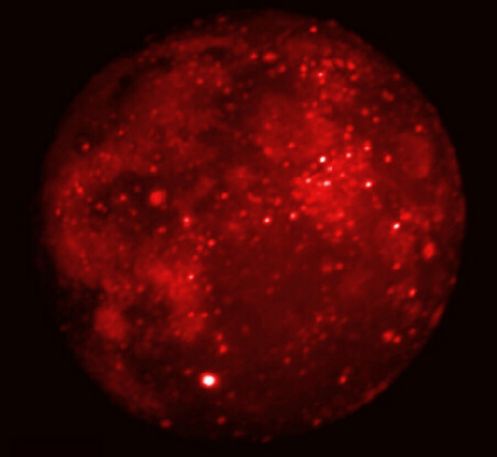 |
Астронет: Астрономическая картинка дня Затмение Луны в инфракрасном свете http://www.astronet.ru:8105/db/msg/1205333/eng |
Credit & Copyright: DCATT Team,
MSX Project
Explanation:
In September of 1996,
the Midcourse
Space Experiment (MSX) satellite had a spectacular view of
a total lunar eclipse
from Earth orbit.
SPIRIT III, an on board infrared telescope, was used to
repeatedly image the moon
during the eclipse.
Above is one of
the images taken during the 70 minute totality, the Moon completely
immersed in the Earth's shadow.
Infrared light
has wavelengths
longer than visible light - humans can not see it but
feel it as heat.
So, the bright spots correspond to the warm areas on
the lunar surface,
and dark areas are cooler.
The brightest spot below and left of center is the
crater Tycho, while
the dark region at the upper right is
the Mare Crisium.
Of course, this
Sunday's lunar eclipse
will not be a total, or even a partial one.
Instead, the Moon will glide
through the subtle outer portion
of the Earth's shadow in a penumbral
eclipse
of the Moon.
Authors & editors:
Robert Nemiroff
(MTU) &
Jerry Bonnell
(USRA)
NASA Web Site Statements, Warnings,
and Disclaimers
NASA Official: Jay Norris.
Specific
rights apply.
A service of:
LHEA at
NASA /
GSFC
& Michigan Tech. U.
